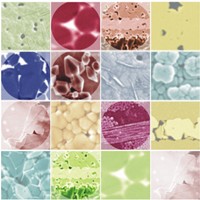|
ELECTRONIC CERAMICS - K5
Head of Department Project and administrative office unit The development of electronic components aims towards decreasing dimensions, higher efficiency and reliability, increased complexity of electronic components and a lower impact on environment. We can reach these aims by developing the materials with improved properties and by implementing the technologies which yield complex miniature structures and devices. The investigated materials include lead-based perovskites with ferroelectric, relaxor or anti-ferroelectric compositions, environment-friendly lead-free materials based on alkaline and earth-alkaline niobates and tantalates with ferroelectric, relaxor or anti-ferroelectric compositions, conducting materials based on complex perovskites and materials for solid oxide fuel cells (SOFC). The phase equilibria studies are a constituent part of our research. We work on the synthesis of (nano) particles with complex chemical composition, chemical solution deposition of thin films and thick film processing. The multifunctionality can be reached by integrating different materials into structures with a suitable geometry (2D and 3D structures). Both physical and chemical interactions of materials influence functional properties of the devices, therefore we need to enhance compatibility, diminish possible reactions between constituent materials, and to understand the difference between layered structures and bulk materials. We investigate the elements and technologies for processing of thick-film pressure sensors and ceramic electromechanical structures (Ceramic MEMS). |
J. Stefan Institute, Jamova 39, 1000 Ljubljana, Slovenia, Telephone: +386 1 477 39 00 |

